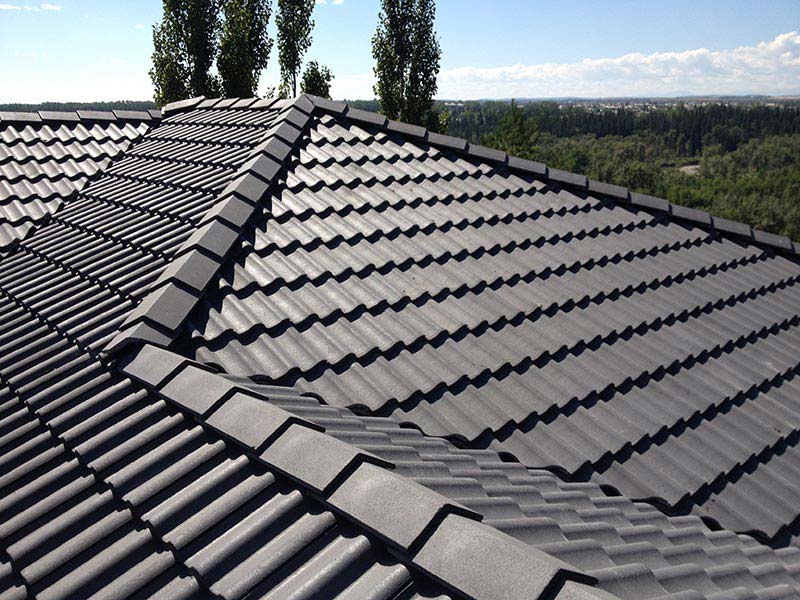The indoor ambient temperature is dictated by the weather outdoors. If it is a bright, sunny, summer’s day, expect the interior of your home to be hot. If it is a dark, gloomy, winter’s day, the house, naturally, will be cold. Most people in the United States have heating and cooling systems in place to counter the weather outside and keep the indoor temperature comfortable. However, it requires energy to warm and cool a space.
The material you choose to build your house will have an influence on your experience inside it. The roof protects you from environmental elements, such as rain, wind, sunlight, and snowfall, and that alone means that it plays an important role in your home. Of course, it will be able to do its job better if you use the right material according to the seasons your area experiences the most.
Winter
Winters in the Western United States can get very cold. Between December to February, you can expect the landscape to be covered in white snow and temperatures ranging from 8 degrees Celsius to sub-zero.
Not all roofing options, therefore, are perfect for this kind of weather. If you choose a complicated design, for example, it will look good, but it will be a pain to clear off snow, ice, pine needles, leaves, and other debris. A simple and plain design is the easiest to maintain.
It is also important to choose metal roofing for homes that experience harsh winters. It is the most durable of all the other options, and it sheds snow very easily. The snow does not accumulate on the roof; it simply slides off onto the ground. In case it sustains damage, it would be less expensive to repair.
Moreover, metal can keep you warm during the cold months. There is no truth in the belief that metal will further lower the temperature in your home during winter. On the contrary, it has the capacity to regulate the temperature indoors. If you choose a roof with dark colors, the material will absorb the heat of the sun, warming the indoors.
As a result, you would not have to crank up the thermostat for warmth. Your house will keep the interiors of your home cozy.
Summer
Terracotta is a favorite in homes in the Southwest of the U.S. because it is the perfect roofing material for boiling summers. These places receive a lot of sunlight and, therefore, require a roofing material that can resist very high temperatures.
The term “terracotta” literally means “cooked earth” in Italian. It is used to extreme heat because the material is baked in a kiln at very high temperatures. Some say that terracotta can survive in places where the weather is warm for 50 years and more.
Terracotta tiles are usually curved which is an advantage because it allows air to circulate beneath the surface, keeping the roof and the rest of the house cooler.
While it is one of the most expensive options, the cost is worth it because of longevity and the potential to lower utility bills by keeping the house cool during summer.
Spring
Homeowners not only have to worry about boiling summers and freezing winters. The roofing material they choose should also survive strong spring showers.
Home Advisor reports that, during spring storms, roofing repair requests jump from houses that use certain materials. Natural slate, for example, is susceptible to cracks because of hail and strong winds. Repairs for natural slate roofing jump 93.6 percent during spring. Asphalt, too, is vulnerable to spring storms. Repairs climb up to 95.6 percent more from March to June.
But, traditional tiles are durable. Because it is heavy, it is unlikely to yield to strong winds. It also requires an extensive support structure which further enhances its capacity to weather spring storms.
Fall
Fall is hurricane season which means that the entire country has to brace for strong winds and heavy rainfall. It is not rare to see roofing materials becoming disconnected and flying around during a hurricane. So, it is important to find the roofing material that will survive an extreme weather event.
Metal is also the best material for roofing because it is the most durable. It can withstand even a Category 4 hurricane which brings wind speed of up to 150 miles (241.4 km) per hour.
However, asphalt shingles can also be effective, as long as nails are used to attach them to the house instead of staples. FEMA recommends using six nails for every three-tab shingle to make it hurricane-proof.
Choosing the right roofing material for your climate is crucial because it protects you from environmental elements, as well as helps regulate indoor temperature for your comfort.
Meta title: What are the Most Suitable Roofing Material for Each Season
meta desc: Roofing protects the people inside the house from weather events and environmental elements. It also has an impact on the temperature inside the house.




